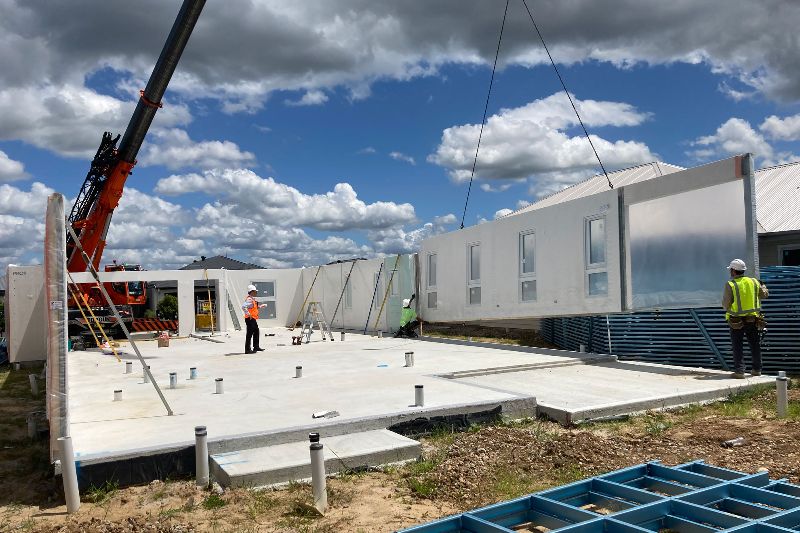In the realm of modern housing, prefabricated houses have emerged as revolutionary structures that challenge traditional notions of construction. These dwellings, often referred to as prefabs, present a fusion of innovation, sustainability, and design excellence. Let's delve into the fascinating world of prefab houses to understand their allure and impact on the contemporary housing landscape.

Innovative Construction Techniques
Prefabricated buildings are crafted using innovative construction techniques that differ from traditional on-site building methods. Manufactured in sections or modules off-site, these components are then transported to the location for assembly. This modular approach allows for precision engineering, quality control, and faster construction timelines, reducing material waste and environmental impact while ensuring structural integrity.
Versatile Design and Customization
Contrary to the misconception that prefab houses lack diversity in design, they offer remarkable versatility. These homes can be customized to suit various architectural styles, accommodating diverse preferences and needs. From sleek, modern designs to rustic or traditional aesthetics, prefabricated houses boast a wide range of customizable options, allowing homeowners to personalize their living spaces.
Sustainability and Eco-Friendly Practices
Prefab houses align with sustainable practices, making them an eco-conscious choice. The controlled manufacturing environment minimizes material waste, and the use of energy-efficient components contributes to reduced energy consumption. Furthermore, some prefabricated homes incorporate eco-friendly materials, renewable energy systems, and water conservation features, exemplifying a commitment to environmental stewardship.
Rapid Construction and Cost Efficiency
One of the standout advantages of prefab houses is their swift construction timeline. Compared to conventional building methods, prefabs can be erected in significantly less time. The streamlined assembly process translates to reduced labour costs and shorter construction periods, enabling homeowners to move into their new residences sooner. Additionally, the controlled manufacturing environment mitigates the risk of unexpected delays due to weather or other on-site challenges.
Quality and Durability
Prefab houses undergo rigorous quality checks and adhere to stringent construction standards. The components are engineered with precision and built to withstand transportation and assembly. As a result, these homes often exhibit robustness and durability, offering homeowners a reliable and resilient living space designed to last for years.
Challenging Stigma and Embracing Innovation
Despite their numerous advantages, prefab houses have historically battled a stigma associated with inferior quality or lack of aesthetic appeal. However, advancements in technology, design, and materials have reshaped this perception. Architects, designers, and homeowners increasingly recognize the potential and benefits of prefabricated housing, leading to a shift in perception and an embrace of innovative building practices.

Prefabricated houses from AFRIPANEL represent a paradigm shift in the housing industry, embodying a blend of innovation, sustainability, and customizable design. With their efficient construction processes, eco-friendly features, diverse design possibilities, and commitment to quality, prefabricated buildings stand as a testament to modernity and functionality. As more individuals seek efficient, sustainable, and beautifully designed homes, the allure and evolution of prefabricated houses continue to shape the future of residential living. Call them at +27 (0) 11 979 1885 to place your order.
